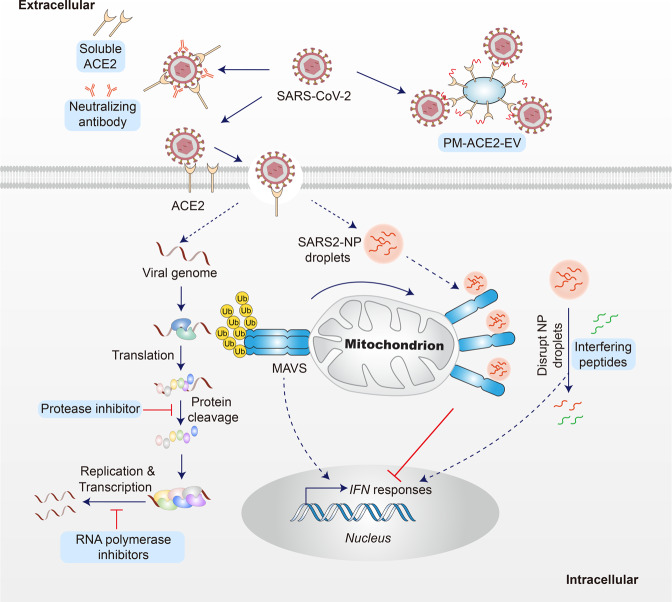Fig. 4.
Mechanisms of antiviral drugs and potential treatments against SARS-CoV-2 Omicron. Extracellularly, soluble ACE2, neutralizing antibodies, and palmitoylated ACE2-enriched EVs can capture SARS-CoV-2 viruses and inhibit SARS-CoV-2 interaction with cell-surface ACE2, resulting in reduced infection. Intracellularly, on the one hand, the released viral genome is translated to produce the polyproteins, which are cleaved by proteases to yield the RNA replicase–transcriptase complex. Then viral genome is duplicated and mRNA encoding structural proteins are transcribed. The protease inhibitors and RNA polymerase inhibitors can be used to inhibit the process of cleavage, transcription, and replication. On the other hand, the N protein of SARS-CoV-2 undergoes LLPS with RNA, which inhibits the aggregation and Lys-63-linked poly-ubiquitination of MAVS and thereby suppresses the innate antiviral immune response. The usage of interfering peptides disrupting N protein droplets can restore the impaired immune response

